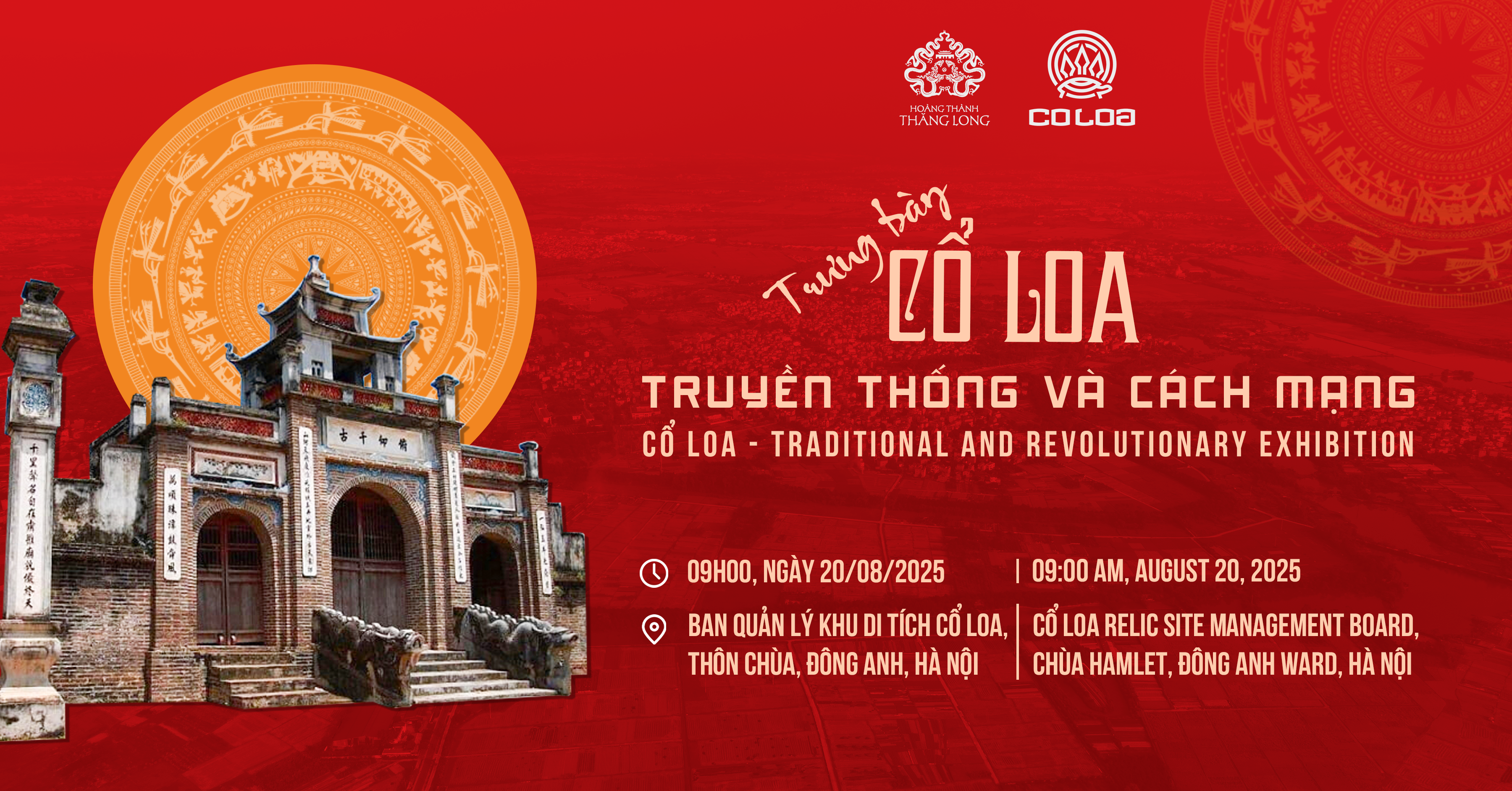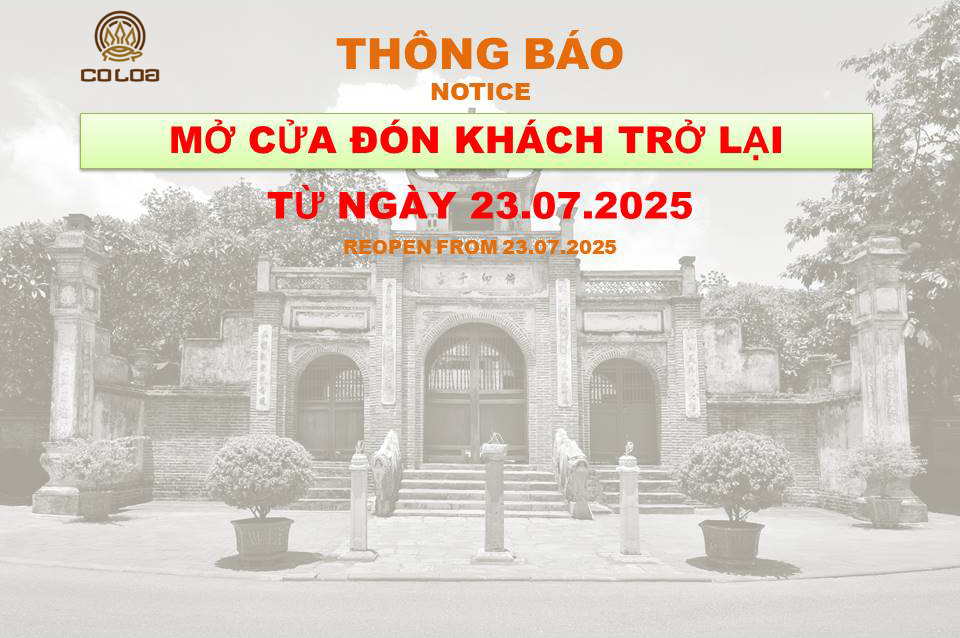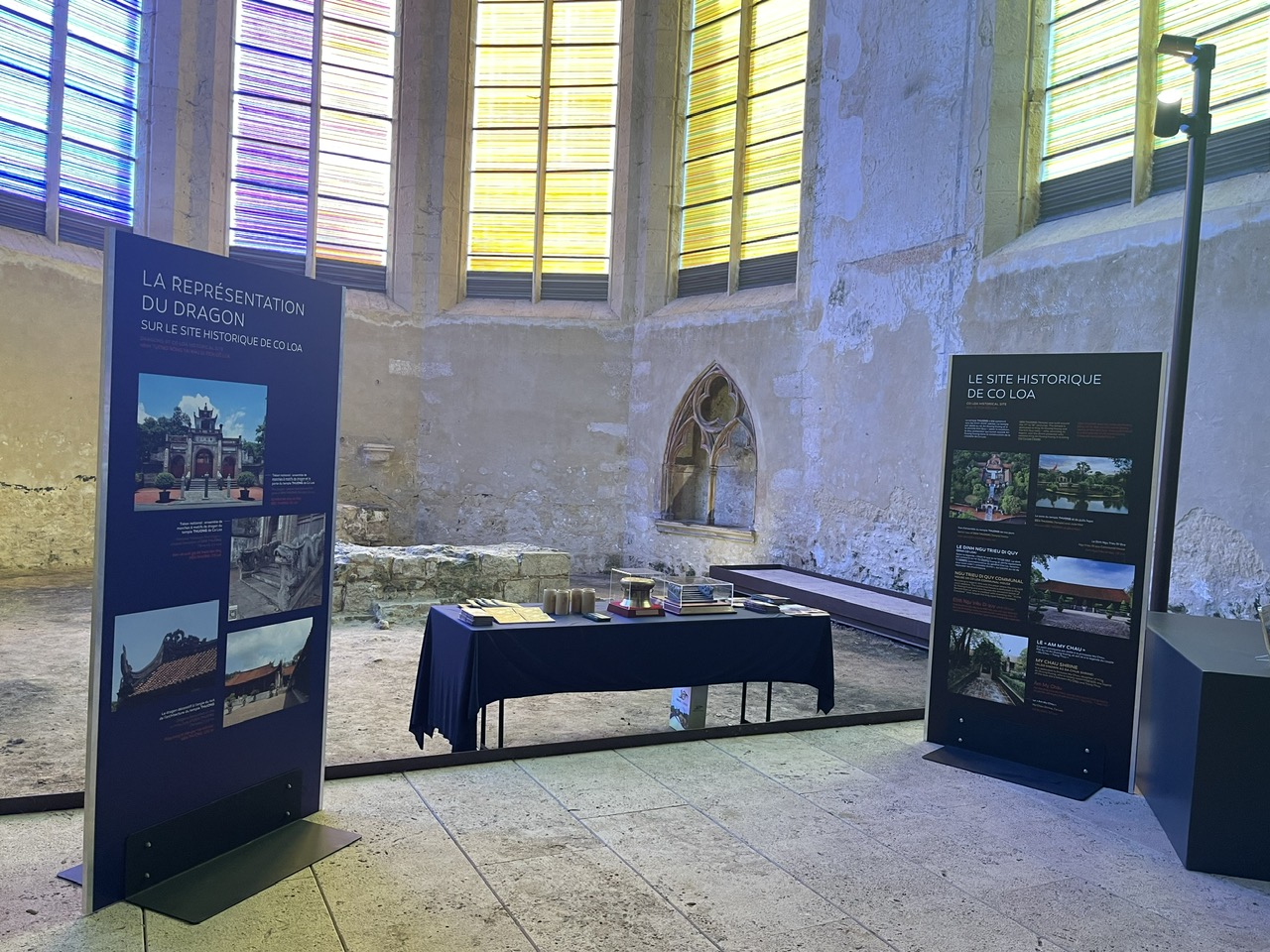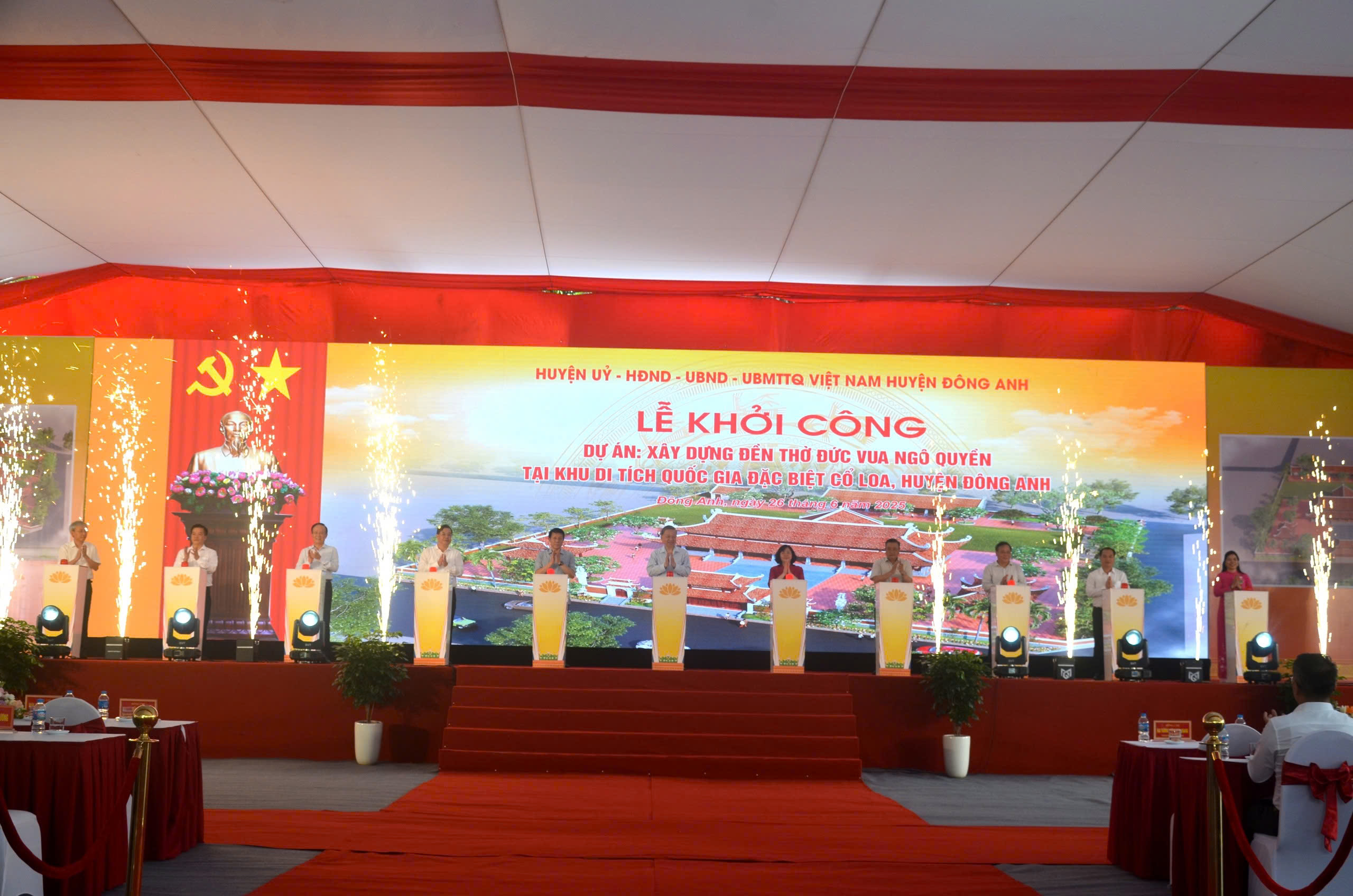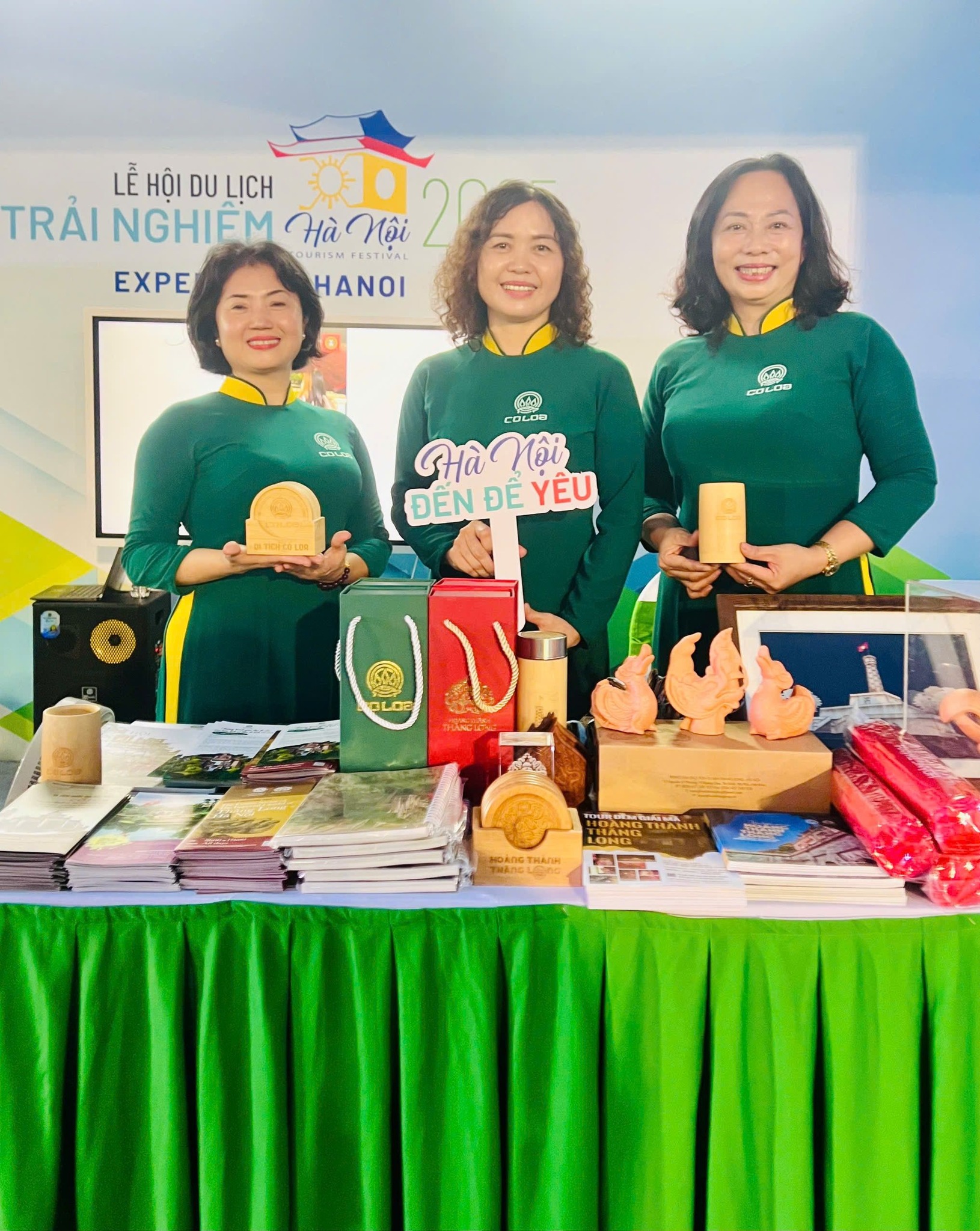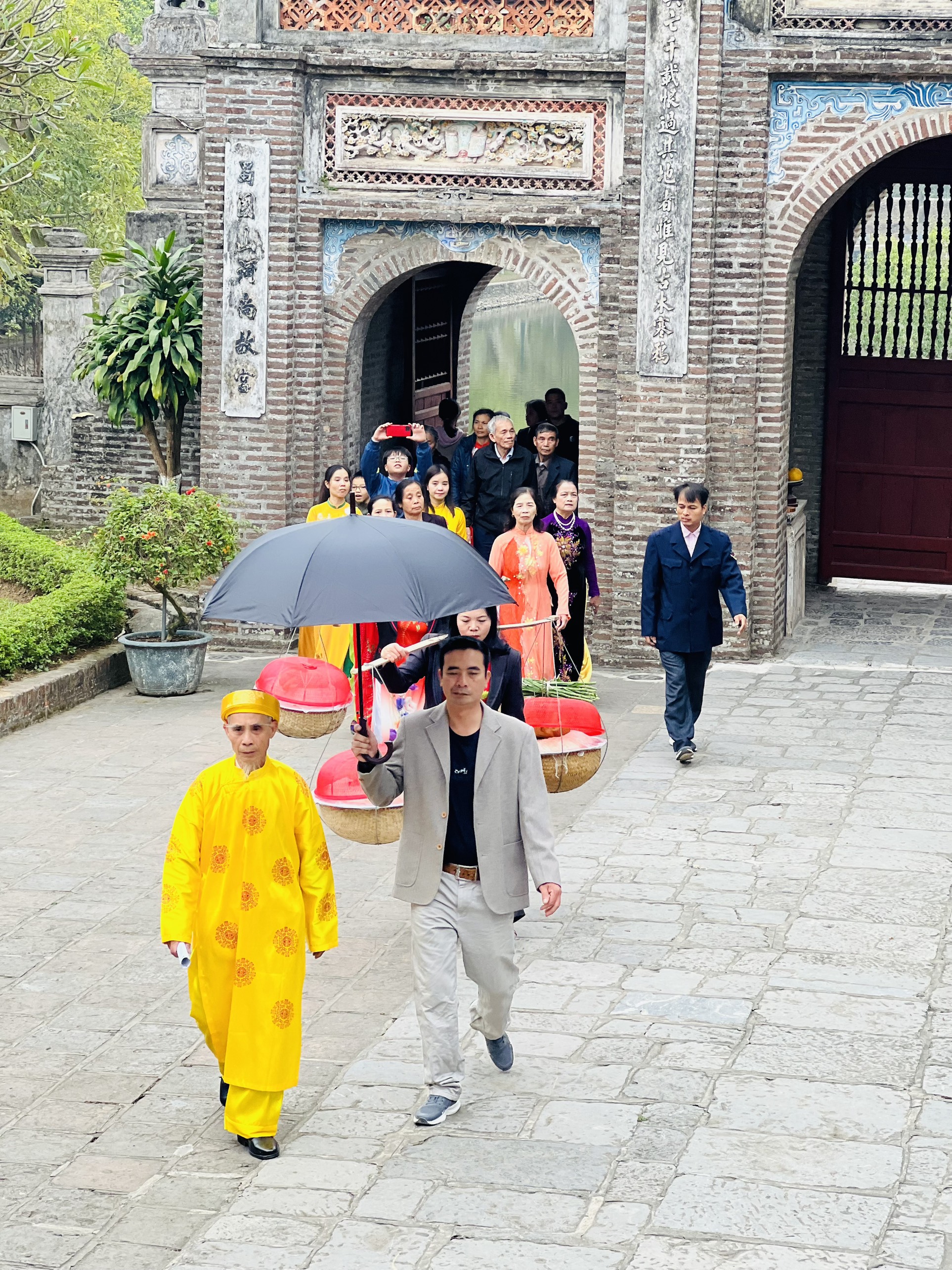
The custom of Quan Đám has long become a traditional cultural beauty at the Cổ Loa Special National Monument. Until now, although there have been some changes, it is still a sustainable tradition in the local community.
- The selection of Quan đám (Thủ từ)
+ In the past: The custom was carried out in the first days of December, this took a long time, this took a long time, this took a long time, because people had to choose people who must be well-off, with a perfect family, free from any bereavement, ethical, without any deformities. Cổ Loa village has 12 hamlets divided into three groups: Nhồi trên, Nhồi Dưới, Gà, Dõng; Vang, Hương, Thượng, Bãi; Chợ, Chùa, Mít, Lan Trì. Every year, four hamlets can nominate four representatives who are “trùm Giáp” to participate in the election as Quan Đám with a term of one year (after three years it will be their turn). Before the August Revolution, Cổ Loa village had up to 28 "giáp", among people of the same age, not everyone was able to be the "giáp" leader. "Giáp" only chooses 1 person from among people of the same age, according to the order of registration in the book, however, on the condition that in that year (the year of selection) the person at the top of the book does not have a funeral or have any deformities. If so, the leader will consider choosing the second, third person... to be the new leader, and so every year in order of accumulation, the person at the top of the list at the age of 59 will be appointed as “giáp” leader. The selected “giáp” leaders, at the end of their 58th year, will have to perform the "Khất Keo ceremony" at Thượng Temple (i.e., perform a ceremony and toss a coin to ask the God to become a Quan Đám) . In the order of "giáp" of the big hamlet to "giáp" of the small hamlet, choose 3 “Quan Đám” to keep "clean grass - red incense" of Thượng temple, Mỵ Châu temple and Thạch temple (Ngự Xạ Đài temple). The representative of the hamlet is the representative of one of the clans in the hamlet, selected by the hamlet according to very strict standards based on local customs and traditions. Below the 3 “Quan đám” are 8 or 6 “đăng cai” appointed by 8 or 6 “giáp” in turn to be in charge of festivals and ceremonies at Thượng temple.
+ Today: After the festival was restored, from 1990 until now, the above customs and practices have basically been maintained, but the election of “Quan đám” has changed that is organized by the Commune People's Committee and Fatherland Front Committee. After the villages nominated (3 to 4 people aged 55 to 70), the Commune People's Committee of the Fatherland Front coordinated with the Elderly Association to organize a conference to select the 2 people with the highest number of votes to be Quan Đám. In terms of standards, the basic features inlude a perfect family, free from any bereavement, without any deformities.
- “Khất keo” Ceremony
+ In the past: carried out at the beginning of the twelfth lunar month, 4 "giáp" leaders of 4 hamlets were selected to bring offerings to Thượng Temple and make “Khất Keo” ceremony. Whoever is chosen by the Saint will become a Quan Đám (formerly called Thủ Từ or Cai Đám) at Thượng Temple to serve the king. Similarly at Mỵ Châu Temple and Ngự Xạ Đài Temple, the same is done. The term of “Quan Đám” is 1 year, from December 14 of the previous year to December 14 of the following year.
+ Today: The custom of "Khất keo" is replaced by secret voting, selecting two people. The person with the highest vote will be the Quan Đám at Thượng Temple, and the one with the lower vote will be the Quan Đám at Mỵ Châu Temple.
- Installation ceremony
+ In the past: Takes place on December 14 every year. Before the installation day, Quan Đám's family prepares all the offerings and personal belongings. On the installation day, Quan Đám's family and clan held a party to invite everyone in the family. From early morning, family and relatives wear strict costumes according to regulations to make the ceremony at the hamlet's shrine, then carry the offerings to the Thượng Temple to do the installation ceremony. After the installation ceremony, continue to Mỵ Châu temple, communal house, and Ngự Xạ Đài temple to perform the ceremony. For “Quan đám” of Mỵ Châu temple and Ngự Xạ Đài temple, they must perform the ceremony at Thuong temple first and then perform the installation ceremony at the temple where they are Quan Đám. And offer at all the village shrines that meet along the way. Quan đám worships at the main hall of Thượng temple praised the merits of the gods, praying for the villagers to be safe.
+ Today: The installation ceremony is called the Reception and Handover Ceremony, chaired by the Party Committee, People's Committee, and Fatherland Front Committee of Co Loa commune, and handed over to the managing unit, the Management Department of Cổ Loa vestige site, belongs to the Thăng Long - Hanoi Heritage Conservation Center.
- “Vinh quy bái tổ” ceremony (honorary ceremony to pay respect to ancestors): In the past and present, after Quan đám installed at Thượng temple and Mỵ Châu hermitage on December 14, they will be there to perform their duties until the end of the Co Loa festival. On January 20, he can return home for 1 day from morning to afternoon to report to his ancestors, family lineage, which is called “vinh quy bái tổ” ceremony.
MANAGEMENT DEPARTMENT OF CỔ LOA VESTIGE SITE
